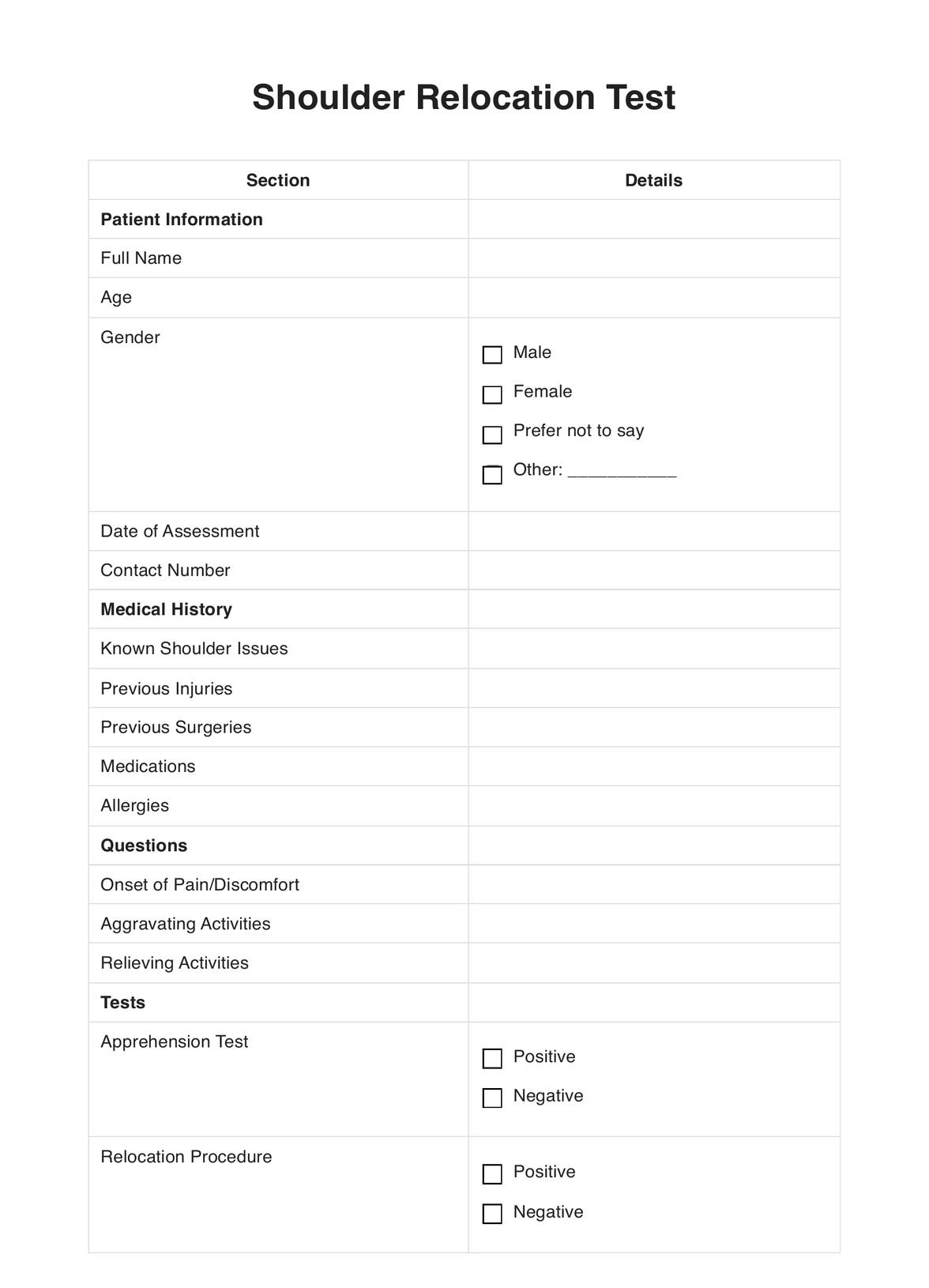Absolutely! While it's tailored for those frequently conducting shoulder relocation tests, its user-friendly design ensures that any healthcare professional can benefit from its features.

Shoulder Relocation Tests
Dive deep into the Shoulder Relocation Test with our comprehensive guide. Get insights, expert tips, and a free PDF template in one place. Try Carepatron today!
Use Template
Shoulder Relocation Tests Template
Commonly asked questions
Carepatron prioritizes data security. It uses state-of-the-art encryption methods and adheres to global data protection regulations, ensuring patient information remains confidential and secure.
Yes, Carepatron is designed for multi-device compatibility. You can use the app seamlessly on a tablet, phone, or computer.
EHR and practice management software
Get started for free
*No credit card required
Free
$0/usd
Unlimited clients
Telehealth
1GB of storage
Client portal text
Automated billing and online payments











